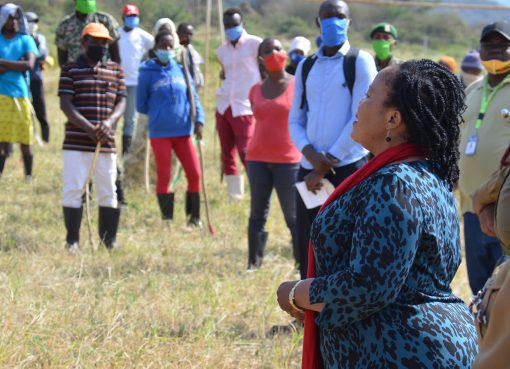Indigenous foods possess the ability to improve the country’s food and nutrition security as they contain high nutritional value and are drought-resistant, according to food and nutrition experts.
The experts gathered in Nairobi for a two-day National Dialogue on Agri-Food Systems and discussed strategies for increased production and consumption of indigenous foods in efforts to increase the health and wealth of Kenyans.
Agriculture Cabinet Secretary (CS) Mithika Linturi said that the National Dialogue is aimed at increasing the availability, access, affordability, and consumption of indigenous foods for healthier diets in Kenya.
“The Food and Nutrition Security Policy (FNSP) 2012 outlines the range of priority areas for government interventions to ensure all citizens get their right to be free from hunger as enshrined in the Kenya Constitution 2010,” said Linturi.
In a speech read on his behalf by State Department for Crop Development Director of Administration Justine Nelima on Wednesday, the CS said that rapid growth in population coupled with climate change is affecting agriculture production with an impact on food systems, rural livelihoods, and nutrition outcomes.
“Currently, the country is grappling with the triple threat of malnutrition, which is undernutrition, overweight, obesity, and micronutrient deficiency,” said Linturi, adding that the Kenya Kwanza administration is committed to eradicating malnutrition in all its forms through the revamping of the food systems.
The CS explained that the economic impact associated with malnutrition, especially underweight and stunting in children, is significant and has far-reaching impacts on productivity, health, and education.
“According to the Cost of Hunger in Africa study of 2019, Kenya is estimated to have lost an equivalent of Sh. 337.9 billion, which represents 6.9 per cent of the 2014 Gross Domestic Product (GDP),” said the CS.
Linturi said that indigenous foods offer diversification and ease the pressure of overreliance on maize as the only staple crop, while at the same time enhancing nutrition security.
“Our farmers need to be assisted to diversify production and shift to alternative crops such as African leafy vegetables, sorghum, millet, cassava, climbing beans, local cherry tomatoes, gooseberries, and sweet potatoes, among others,” said Linturi.
“The ministry is committed to systemic interventions aimed at increasing the consumption of indigenous foods in the country, and together with the Ministry of Health, in collaboration with academia and with support from FAO, they developed the Kenya Food Composition Table 2018, which provides the best dietary guidelines for meeting nutrient requirements,” explained the CS.
Dr. Robert Mwadime, who is the Chief of Party (CoP) for the Kenya Crops and Dairy Market Systems (KCDMS), a USAID project, said that the people in leadership positions need to be the driving force towards ensuring that indigenous foods are grown and adopted.
“The first step is to educate the people on the nutritional value of these crops and livestock so that we create demand at the consumer level,” said Mwadime.
He explained that for them as KCDMS, they have made a rule that whenever they are funding a group of more than 10 people for a workshop, the foods that are being served in the meeting must be indigenous.
USAID Kenya Deputy Director Office of Economic Growth and Inclusion Dave Rogers said that this year USAID funded a company in Taita Taveta county to mobilise 4, 000 farmers to produce 161 metric tonnes of pigeon peas, cowpeas, green grammes, and groundnuts, a nearly fivefold increase in their yearly production.
“We plan to plant 27, 000 acres of drought-tolerant grain, which could feed 275, 000 people in the next year, which is 80 per cent of the Taita Taveta County population,” said Rodgers.
Global Alliance for Improved Nutrition (GAIN) Country Director Ruth Okowa said that they have worked with the government on policies on fortified foods, such as wheat flour, maize flour, edible oils, and others, which are meant to improve the nutrient value of foods consumed in the country.
“We have started on a programme to increase the consumption of vegetables for women of reproductive age and children, and the focus is on indigenous vegetables because various research has shown that only about five per cent of Kenyans consume vegetables in the right quantities,” said Okowa.
Kisumu County Governor’s spouse, Mrs. Dorothy Nyongo, said that her county has launched the Kisumu Food Systems Strategy, which seeks to establish an integrated food systems approach that enhances the exploitation of end-to-end and farm-to-plate methods.
Mrs. Nyongo explained that she introduced healthy indigenous foods to his family and children very early and once had a birthday party of fruits and vegetables, which her children did not like very much.
By Joseph Ng’ang’a





